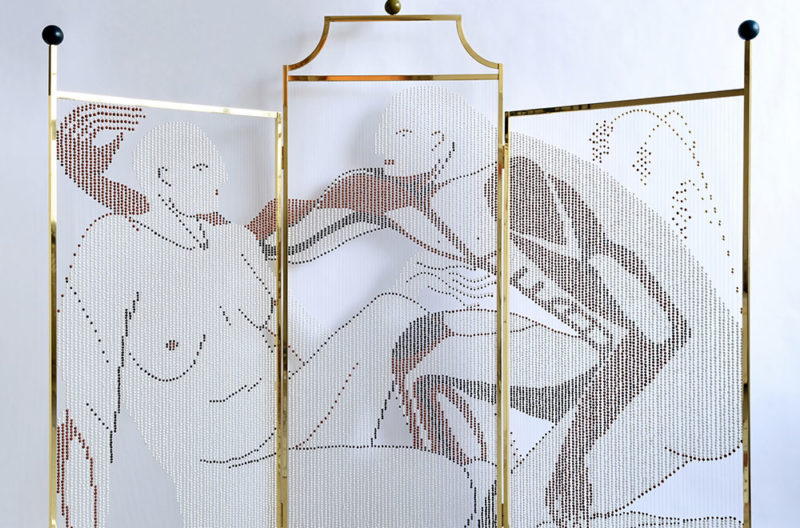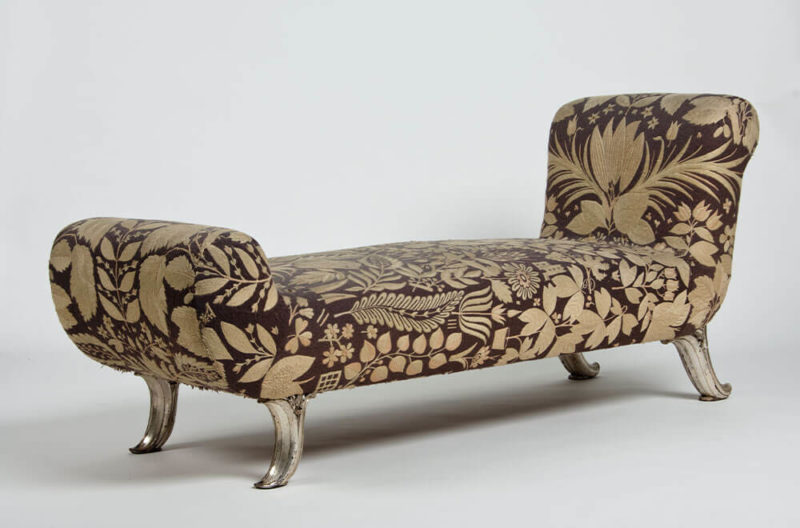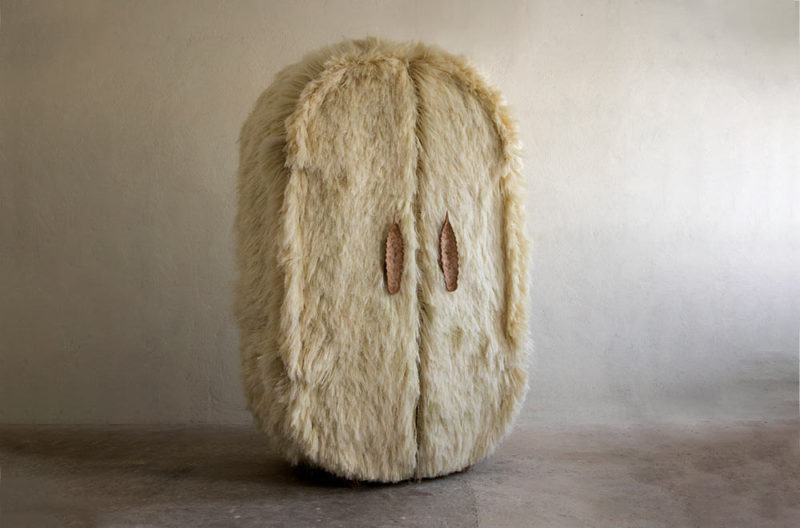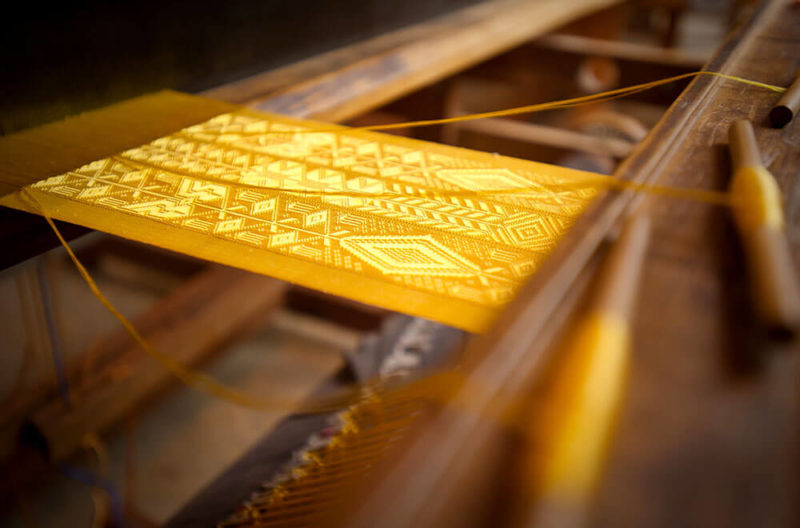‘Ousia Throne X textile work’, 2022
Sizar Alexis & Nathalie Van der Massen
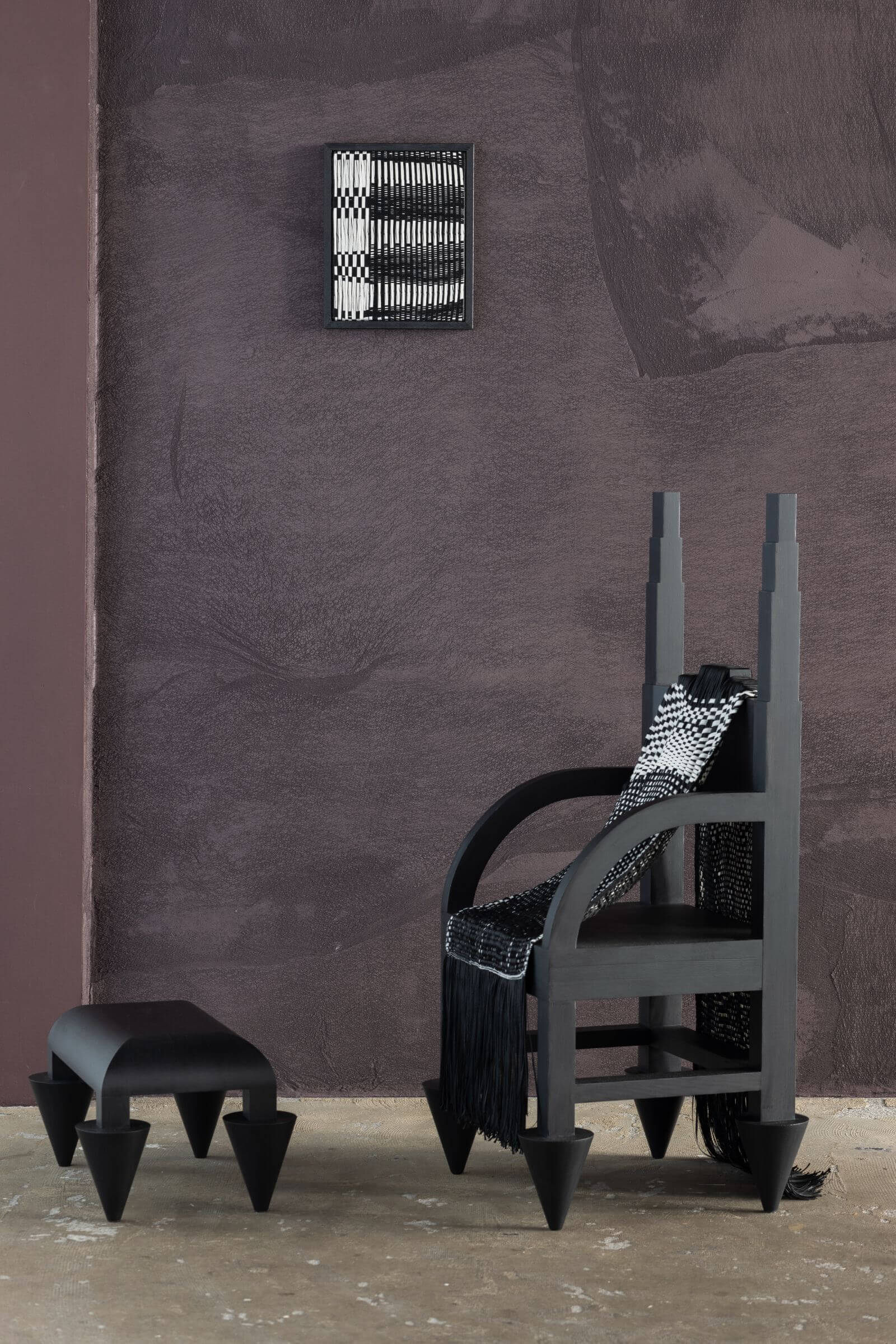
Sizar Alexis & Nathalie Van der Massen, ‘Ousia Throne X textile work’, 2022
COURTESY: Sizar Alexis & Nathalie Van der Massen, Atelier Ecru Gallery / PHOTOGRAPH: Tijs Vervecken
THIS MAGNIFICENT SCULPTURAL throne is the joint work of Swedish-Iraqi designer Sizar Alexis and the Belgian textile designer Nathalie Van der Massen. It is a startling outcome of two designers both fascinated by materials and story-telling, who create work with a shared feeling for geometry, tactility and stillness.
The textile is a unique creation, one of three made by Van der Massen specifically for this throne, responding to its archaic inspiration and monochrome strength. It acts almost as an extra skin or ceremonial garment. The chair is one of ten in a limited edition from the Ousia collection by Alexis and his sister Sinar Alexis which consists of a chair and stool inspired by ancient Mesopotamian furniture.
Sizar Alexis, born in Ankawa, just outside the city of Erbil in northern Iraq, explains that he was only eight or nine in 1997 when his family migrated from Northern Iraq to Sweden. Trained at first as an engineer, it was while studying for a fine arts degree in 2019 that he became interested in designing objects and furniture for the home. In search of inspiration, he turned to his Chaldean roots, which reach back to 5000 BC in ancient Mesopotamia. Alexis comments that some of the earliest surviving representations of seating are on objects from Ur, in ancient southern Mesopotamia, including cylinder seals and the famous Standard of Ur, held in the British Museum. These date back to 2600–2400 BC. In this civilisation, the throne or kursi symbolised the divine or its representative – such as a king – which meant that only people in authority would sit on them.
“This was a special project for me,” Alexis says, “it allowed me to explore my Mesopotamian heritage.” While Alexis drew deeply on ancient Iraqi design and craftsmanship, he reconciled these elements with Scandinavian design principles of simplicity and functionality. This gives the work its hybrid energy. The back of the chair echoes the design of ziggurats, suggesting steps up to the divine, while the feet are inspired by the cone-shaped objects depicted on Assyrian stone reliefs. Scholars consider these to be either conifer cones or the flower head of the male date palm, used to suggest the symbolic pollination of trees. Alexis says that kings would be depicted with one of these cones in a bag – as a sign of virility and good health: “We chose the cone because it is a good luck charm,” he says. As well as drawing on Mesopotamian symbolism, Alexis studied the traditional joinery techniques used in ancient furniture making. For this first chair, Alexis combined traditional craftsmanship with glue, to hold the piece firmly together. His intention is to create another example using only ancient joinery.
Alexis and his sister hope to continue exploring their heritage through design. His next project is inspired by the heritage of the Marsh Arabs.
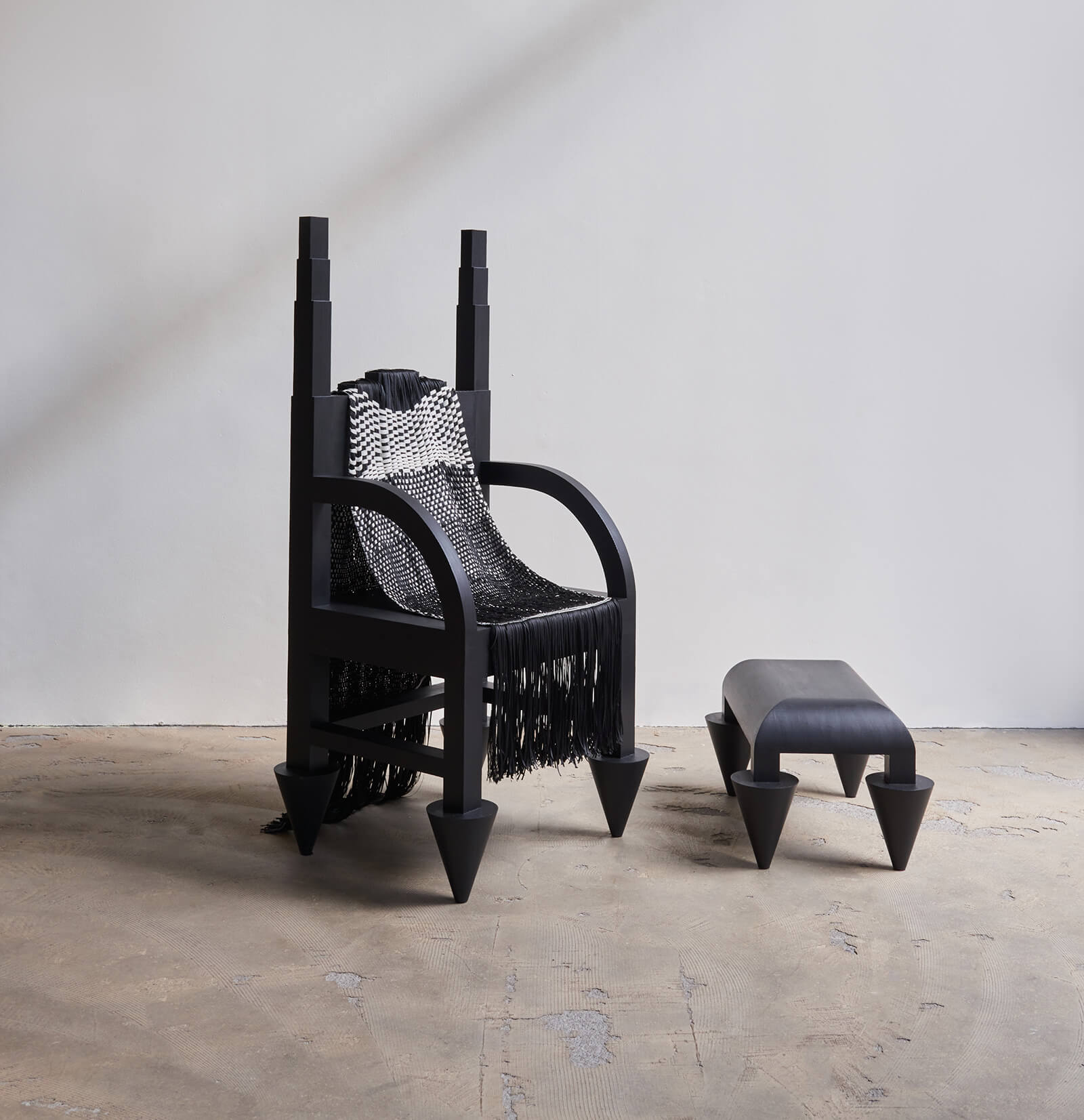
Sizar Alexis & Nathalie Van der Massen, ‘Ousia Throne X textile work’, 2022
COURTESY: Sizar Alexis & Nathalie Van der Massen, Atelier Ecru Gallery
‘common/un/common’ exhibition by Nathalie Van der Massen & Sizar Alexis, at Atelier Ecru Gallery, Belgium, runs from 5 November 2022 – 8 January 2023.




